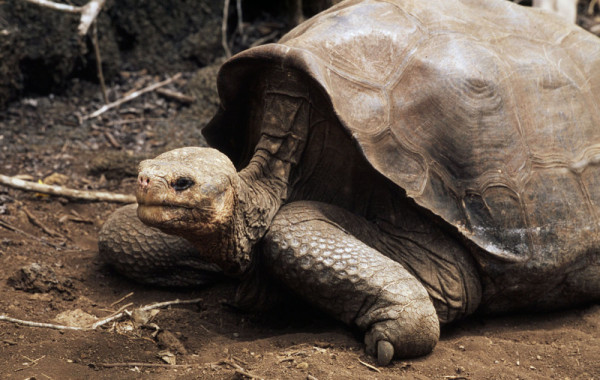Remembering Lonesome George on World Turtle day
Lonesome George died almost a year ago: on June 24, 2012. He was the last surviving Pinta Island Galápagos tortoise (Chelonoidis nigra abingdonii) and was over 100 years old. George was discovered in 1971 on the island of Pinta and was subsequently moved to Charles Darwin Research Station on Santa Cruz Island. And there he lived for another 40 years as the last of his kind—a poignant symbol of the need to conserve wildlife.
Apparently Galápagos tortoises (Chelonoidis nigra) once numbered more than 250,000 animals distributed amongst the various islands of the Galápagos archipelago. But in the 16th-19th centuries they were heavily exploited to supply meat to passing ships. The slow and essentially defenceless turtles were easily captured and stored live below decks of the ships. The animals could remain alive for over a year in these conditions and be slaughtered to provide fresh meat as desired. Many turtles were also killed for their oil. The introduction of feral animals (pigs, dogs, cats, rats, goats, donkeys and cattle) to the Galápagos islands added additional threats to the survival of the tortoises through predation and reduction of habitat. By the 1970s there were only about 3,000 Galápagos tortoises left.

The good news is that since the 1970s there has been a concerted effort to conserve the species. Galápagos tortoises are protected in Ecuador and are listed on CITES Appendix I which prohibits commercial trade. Through a combination of protection; captive breeding and release; and eradication of feral animals, the wild population has rebounded to approximately 20,000 animals. This is far fewer than the historic population, and the species is still assessed as vulnerable by the International Union for Conservation of Nature (IUCN), but at least the trend is going in the right direction.
Unfortunately, the same can’t be said for many other species of turtles. The situation has become particularly dire for many species of Asian freshwater turtles. Over the past 20 years many species have become increasingly threatened by extreme overharvesting for the Chinese market for live animals for meat. The late John Behler, former co-chair of the IUCN Tortoise and Freshwater Specialist Group, once said that “Southeast Asia is being vacuumed of its turtles for China’s food markets.” Sadly, that was a fair description of the situation.
The world has responded over the past decade by listing almost every species of Asian freshwater turtle on CITES Appendix II. But illegal harvest and trade in Asian freshwater turtles continues and poses a very real threat to the survival of many species.
Many individuals and many organizations are working hard to combat illegal trade in Asian turtles, preserve their habitat, and help species recover. WWF-Canada donors have contributed to that effort over the past five years by providing funding to support turtle conservation projects in India, Myanmar, Bangladesh and China. And of course TRAFFIC continues to support enforcement efforts to stop illegal wildlife trade in Canada and abroad. We know that these efforts can succeed—we have the encouraging example of the Galápagos tortoises to draw on. But whether they will succeed remains to be seen.
Of course it is too late for Lonesome George and his subspecies. Hopefully he will continue to be a symbol for the continued threat to turtles around the world, and an incentive to ensure their conservation. RIP George.

